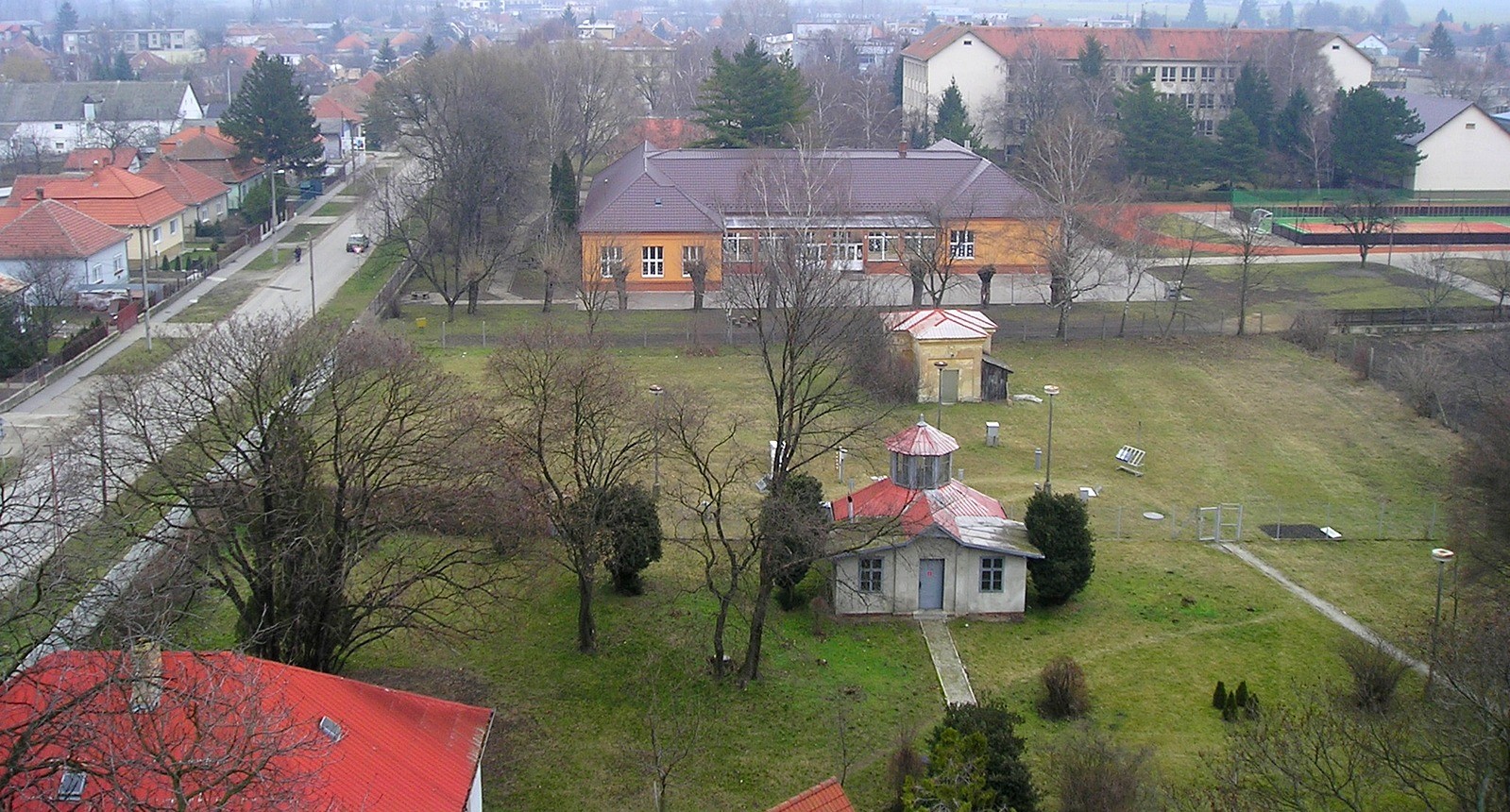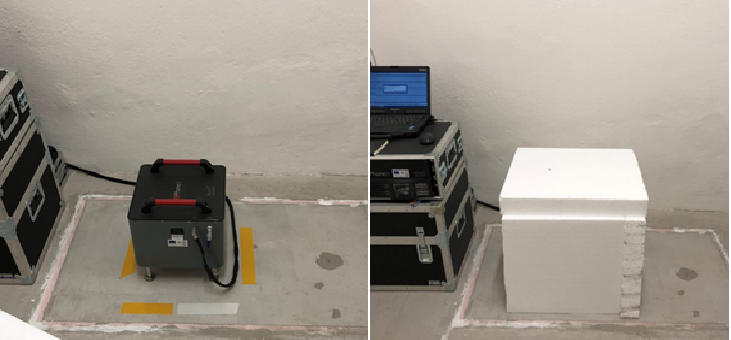December 2021
General Announcement
- New gravity station in Slovakia joined IGETS
Meeting Announcement
- COSPAR 2022, 44th Scientific Assembly
Meetings Calendar
IAG Sponsored Meetings
- IGRF Workshop 2022
- EUREF 2022 Symposium
- Spatial Data: science, research and technology 2022
- X Hotine-Marussi Symposium on Mathematical Geodesy
- IGS Workshop "IGS 2022: Science from Earth to Space"
- 2nd International Symposium of Commission 4: Positioning and Applications
- Gravity, Geoid and Height Systems 2022 (GGHS2022)
- REFAG 2022
- Unified Analysis Workshop on Laser Ranging
- 22nd International Workshop on Laser Ranging
- 20th Assembly of WEGENER
IAG Related Meetings
- COSPAR 2022
Reports
- ILRS Virtual World Tour 2021
General Announcements
New gravity station in Slovakia joined IGETS
New station Hurbanovo located in Slovakia joined IGETS (International Geodynamics and Earth Tide Service, ISDC: IGETS Data Base (gfz-potsdam.de)) in 2021. The station is equipped with the relative spring gravimeter gPhoneX #108.
The Hurbanovo Gravimetric Observatory (Fig. 1) in southern Slovakia was established in 2019 as a part of the integrated station HUVO (GNSS permanent station and seismic station). HUVO is located on a ground floor in a small building in the vicinity of the Hurbanovo Geomagnetic Observatory, which was founded on September 30, 1900. Integration of InSAR transponder into current station architecture is also planned in 2022.

Fig. 1: View of the Hurbanovo Geomagnetic Observatory and new Gravimetric Observatory. The pillar with the relative gravimeter gPhoneX is located in the small building in the middle of the picture.
The Gravimetric Observatory equipped with the spring gravimeter gPhoneX #108 provides continuous time-varying gravity and atmospheric pressure data. The spring gravimeter gPhoneX #108 is installed on a concrete block isolated from the rest of the building grounding (Fig. 2). The room containing gravimeter is thermally stabilized at around 22 ± 1°C using an air conditioning unit. An additional thermal polystyrene insulation is placed around the instrument further decreasing temperature variations on its surface.
The operation and maintenance of the HUVO gravimetric instrumentation is done mainly by the staff of the Slovak University of Technology (SUT). HUVO gravimetric observatory is also equipped with the accelerometer Raspberry Shake (4D) installed on the same concrete block as the spring gravimeter, operated by the staff of the Slovak Academy of Sciences.
Several other meteorological sensors are also present at the site in the close vicinity of the gPhoneX #108: the meteorological station MWS 9-5, a well equipped with the ground-water level sensor and a total number of 16 sensors measuring the soil moisture. These sensors provide information necessary for modelling the gravity response associated with the variation of local hydrological masses.

Fig. 2: Relative metal spring gravimeter gPhoneX #108 in Hurbanovo station.
Concerning signal to noise ratio, the HUVO station can be characterized as moderately noisy. The Level 1 data from July 2020 are available via IGETS service.
J. Janák, A. Novák, J. Papčo
Department of Theoretical Geodesy and Geoinformatics, Slovak University of Technology in Bratislava, Slovakia
Meeting Announcement
COSPAR 2022, 44th Scientific Assembly
July 16-24, 2022, Athens, Greece
https://www.cospar-assembly.org
https://cosparathens2022.org
The next COSPAR meeting will attract about 2500 scientists and engineers from the world over. More than 100 symposia will cover all areas of space science: Space studies of the Earth’s surface, meteorology and climate, Space studies of the Earth-Moon, Planets and small bodies of the solar system, Space studies of the upper atmospheres of the Earth and Planets including reference atmosphere, Space plasmas in the Solar system, including planetary magnetospheres, research in astrophysics from space, life sciences as related to space, material sciences in space, fundamental physics in space, and several Panel meetings.
Interdisciplinary lectures will also be given by key scientists and several associated events are planned, such as a meeting organized by Elsevier for young scientists to help them publish or review scientific articles.
In particular, we would like to draw the attention of geodesists to a meeting, organized by the COSPAR Panel on Satellite Dynamics.
The aim of the Panel on Satellite Dynamics is to support activities related to the detailed description of the motion of artificial celestial bodies. This goal should be achieved by improving the current theories of motion and by evaluating their determining forces in a more sophisticated way. Detailed theoretical understanding of the dynamics of satellites should coincide with the results of precise tracking in order to obtain the most precise knowledge possible of the orbit and the corresponding orbital positions.
The scope of the Panel on Satellite Dynamics entails the positioning of a wide range of objects in space, including Earth orbiting satellites for Earth observation such as GRACE-FO, Swarm, Jason series, and the Copernicus Sentinels, and navigation satellite systems such as GPS, GLONASS, Galileo, Beidou, QZSS or tracking systems such as SLR and DORIS. In addition, positioning plays an important role in the success of the continuously growing number of today's and tomorrow’s missions to explore the Solar System. Recent and future missions have to deal with complex trajectories and innovative propulsion and breaking techniques to visit multiple bodies (e.g., Cassini, Dawn, JUICE), small unconventional bodies (e.g., Rosetta, OSIRIS-REx, Lucy), and harsh and unknown environmental conditions challenging our technical capabilities (e.g., Messenger, Venus Express, BepiColombo, JUNO). Both advances in the modeling of spacecraft dynamics and the theoretical understanding of space observables (e.g., range, Doppler, VLBI, optical) are required to allow for a more efficient exploration and a deeper understanding of our Solar System.
Limiting errors in Precise Orbit Determination (solar radiation pressure, time variable gravity fields, phase center corrections, attitude variations, etc...) are of critical interest for many stakeholders. Moreover, formations of satellites are being realized and proposed for Earth observation and fundamental sciences, that impose very severe constraints on (relative) positioning and orbit and attitude control solutions (e.g. micro-propulsion). Mini-satellites and cubesats also represent a new frontier for both Earth and planetary exploration, posing new challenges as well as new opportunities.
Satellite orbit determination requires the availability of tracking systems, well established reference frames and accurate station coordinate solutions, detailed force and satellite models, and high-precision time and frequency standards.
Contributions covering all recent developments and plans in ground, satellite or probe positioning and navigation are solicited as well as contributions on current progress on establishment, maintenance and improvement of reference systems in Geo- and planetary sciences.
Important dates:
- 11 February 2022: Abstract submission deadline
- 29 April 2022: end of early registration fees and presenter registration deadline
Heike Peter, Shuanggen Jin
Convenors of the Satellite Dynamic Panel sessions
https://cosparhq.cnes.fr/scientific-structure/panels/technical-panel-on-satellite-dynamics-psd/
Meetings Calendar
IAG Sponsored Meetings
- IGRF Workshop 2022, April 11-13, 2022 Leipzig, Germany
- URL: https://www.iag-aig.org/events/67
- EUREF 2022 Symposium, June 1-4, 2022, Zagreb, Croatia
URL: https://www.igs.org/event/euref-2022-symposium/ - Spatial Data: science, research and technology 2022, May 23 – 25, 2022, Moscow, Russia
URL: https://scidata.ru/en2022 - X. Hotine-Marussi Symposium on Mathematical Geodesy, June 13 – 17, 2022, Milan, Italy
URL: http://icct.kma.zcu.cz/index.php?title=Hotine-Marussi_2022 - IGS Workshop "IGS 2022: Science from Earth to Space", June 27-July 1, 2022, Boulder CO, USA
URL: https://www.igscb.org/event/ - 2nd International Symposium of Commission 4: Positioning and Applications, September 5-9, 2022, Potsdam, Germany,
URL: https://iag-commission4-symposium2022.net/ - Gravity, Geoid, and Height Systems 2022 (GGHS2022), September 12-16, 2022, Austin TX, USA
URL: https://www.csr.utexas.edu/gghs2022/index.html - REFAG 2022, October 17-21, 2022, Thessaloniki, Greece
URL: https://www.refag2022.org/ - Unified Analysis Workshop (UAW) October 22-25, 2022, Thessaloniki, Greece
URL: https://ggos.org/event/unified-analysis-workshop-uaw-2022/ - 22nd International Workshop on Laser Ranging, October 31 – November 4, 2022, Kunming, China
- URL: http://22ndilrs2020.csp.escience.cn
- 20th Assembly of WEGENER, october 25-29, 2022, Marrakech, Morocco, URL: https://wegener2021.sciencesconf.org
IAG Related Meetings
- COSPAR 2022, July 16-24, 2022, Athens, Greece
- URL: https://www.cospar-assembly.org
Further details are available in the IAG Event Calendar at: http://www.iag-aig.org/events.
Reports
2021 SIRGAS Symposium
The 2021 SIRGAS Symposium was held between November 29 and December 1, 2021 as virtual mode and was transmitted through the Zoom platform, with free participation. Following the new SIRGAS events´ regulation, this symposium had a simultaneous translation service between the English and Spanish languages, during the technical sessions and the SIRGAS Working Groups meetings.
The organization of the 2021 SIRGAS Symposium was under the coordination of the SIRGAS Executive Committee and the Local Organizing Committee, the National Geographic Institute of Peru. As on previous occasions, it had the valuable support of the International Association of Geodesy and the Pan-American Institute of Geography and History.
The technical sessions of the symposium had the contribution of 59 presentations, 24 oral and 29 poster. There was an attendance average of 120 participants in the technical sessions through the Zoom platform and 720 participants through the YouTube channel.
The complete Symposium program is available at https://app.ign.gob.pe/simposio/programacion/.
5 technical sessions were held between 10 a.m. and 1 p.m. (-3 UTC time) and in the afternoons, between 3 p.m. and 4 p.m. (-3 UTC time), the SIRGAS working groups meetings.
The main topics addressed during the symposium were:
Session 1: Report of the SIRGAS authorities: President of SIRGAS, Presidents of the SIRGAS Working Groups and update of the GRFA of UN-GGIM: Americas;
Session 2: Development and maintenance of the SIRGAS reference framework;
Session 3: Modeling of the Earth's gravity field (geoid, gravimetry, international reference system of heights).
Session 4: Applications of the SIRGAS framework (national reports, real-time applications, etc.). It featured 3 oral presentations and 2 posters
Session 5: SIRGAS contributions to the modeling of the Earth System (troposphere, ionosphere, seismology, oceanography and hydrography).
The posters are displayed in the gallery, organized per day at https://app.ign.gob.pe/simposio/galeria/.
For those who could not follow the technical sessions online, the videos of each day are available at: https://app.ign.gob.pe/simposio/video/.
For the 2021 SIRGAS Symposium in particular, the Journal of Geodetic Sciences (JoGS) is developing a special issue of the journal related to it. The authors have been invited to submit original papers and articles focusing on Geodesy and Earth Sciences for the inclusion in this special issue of the journal.
Sonia COSTA
The IAG Newsletter is under the editorial responsibility of the Communication and Outreach Branch (COB) of the IAG. It is an open forum and contributors are welcome to send material (preferably in electronic form) to the IAG COB (newsletter@iag-aig.org). These contributions should complement information sent by IAG officials or by IAG symposia organizers (reports and announcements). The IAG Newsletter is published monthly. It is available in different formats from the IAG new internet site: http://www.iag-aig.org.
Each IAG Newsletter includes several of the following topics:
- news from the Bureau Members
- general information
- reports of IAG symposia
- reports by commissions, special commissions or study groups
- symposia announcements
- book reviews
- fast bibliography
| DOCUMENTS |
| IAG_Newsletter_December_2021.pdf |
